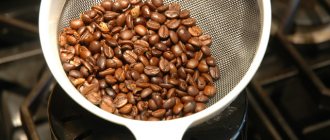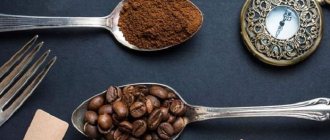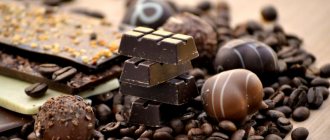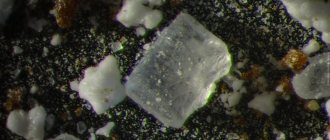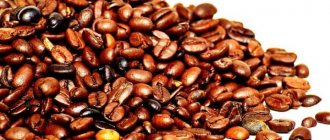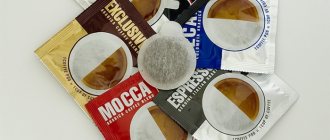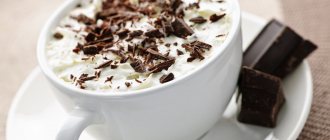How to Use Coffee Glycemic Index Data
The glycemic index of coffee is especially important for three categories of coffee drinkers:
- athletes who draw up a nutrition plan based on it to gain weight or burn fat;
- diabetic patients controlling blood sugar levels;
- adherents to the Montignac diet , based on GI foods.
For athletes, a cup of coffee before training helps them exercise more intensely and gain more energy and strength. In this case, just black natural coffee is enough, but you can also drink it with sugar.
Diabetics need to control their blood sugar levels and preferably choose low GI foods and drinks. Therefore, sweet milk-based coffee is not for them. It is better to prefer natural coffee with a few spoons of milk.
The Montignac diet recommends choosing foods with a low GI, and therefore, if you want to lose weight and adhere to the principles of this method, drink Americano, espresso or ristretto, but not much, since sugars are quickly stored in subcutaneous fat.
Useful and harmful additives
Many people prefer to drink the drink diluted with something. But not all supplements are recommended for diabetics. Some of them can even cause harm.
First of all, healthy supplements include soy and almond milk.
At the same time, the former gives the drink a sweetish taste. Skim milk is also an allowed additive. It allows you to achieve a mild taste and saturates the body with vitamin D and calcium. The latter, in turn, is a big plus, since coffee washes out this element.
However, skim milk does not increase triglycerides in the body. Those who like the benefits of coffee but don't want to drink it without sugar can use stevia. It is a non-calorie sweetener.
Now, regarding harmful additives. Naturally, diabetics are not recommended to drink coffee with sugar and products that contain it. Their use significantly increases the BG of the drink.
This also partly includes artificial sweeteners. They can be used, but in moderation.
Dairy cream is almost pure fat. It does not have a very good effect on the condition of the diabetic body, and also significantly increases cholesterol levels.
Non-dairy cream is completely contraindicated . They contain trans fats, which, in turn, are not only harmful for those suffering from diabetes, but also for all healthy people, as they significantly increase the likelihood of developing cancer.
Glycemic index of coffee depending on the preparation method
The longer coffee interacts with water, the greater the percentage of caffeine and sugars transferred into the drink, which means the higher the glycemic index will be.
- Ristretto has the lowest glycemic index: the grains are in contact with water for only 15-20 seconds.
- In second place is espresso, about 30 seconds of preparation.
- In third place is coffee from drip and capsule coffee makers.
- The maximum caffeine is in a drink prepared in a Turkish or French press, or when coffee is simply poured with water and allowed to brew.
GI coffee
GI is used in the preparation of dietary menus, diets for diabetics, etc. Foods with a high numerical value contain quickly digestible carbohydrates. Glucose is taken as the standard and its indicator is 100 units.
For coffee, the GI is 42-52 units. The drink contains dissolved sugars, which helps transform them into subcutaneous fat in the absence of physical activity.
The product is rich in vitamins B2, B5, B3, manganese. 100 g contains 99.39 g of water, 0.02 g of fat and 0.12 g of protein. The glycemic index of natural ground coffee corresponds to 42 units, which indicates an increase in glucose concentration after drinking the drink.
The GI is influenced by a number of factors, which include the type of coffee beans, the place of cultivation, soil properties, and fertilizers. When choosing drinks, you should consider the glycemic index.
Frequent and excessive consumption of foods with a high index can provoke metabolic disorders and negatively affect sugar levels. Side effects include weight gain and hunger.
We recommend that you read the Glycemic Index of Millet
Sharp changes in insulin and glucose levels in the blood adversely affect the functioning of the digestive organs and liver, and can cause the development of type 2 diabetes. Sweet coffee with milk is contraindicated for diabetics. For example, the diet of M. Montignac, developed for weight loss, excludes the consumption of foods with a high GI.
Glycemic index of natural coffee
If you carefully calculate the amount of sugar and energy you receive (this can be done using tables on the Internet), you may find that the data will vary slightly. On average, the glycemic index of natural coffee ranges from 42 to 52 , this difference is due to several factors:
- Type of coffee: Arabica contains 3% more sugar, but Robusta has almost 2 times more caffeine, which means its glycemic index is higher.
- Coffee variety and location: Colombian Arabica is believed to have more caffeine than the same variety from other countries. Highland varieties contain less caffeine than valley varieties.
- Features and method of preparing coffee.
Advantages and disadvantages of the drink
The substances contained in this drink can be considered (and in fact are) narcotic. But, on the other hand, this includes many things familiar to people, for example, sugar.
Coffee has negative effects on the body:
- firstly, when absorbed into the blood, it increases the pulse, which leads to an increase in blood pressure;
- secondly, it invigorates only in the first hour or two, after which a loss of strength and irritability occurs. There are two ways to remove them: rest well or drink another cup;
- thirdly, this product interferes with normal falling asleep and staying asleep. This is due to the peculiarities of the effect of caffeine on the central nervous system. Thus, it blocks neurotransmitter receptors that are responsible for the feeling of drowsiness;
- and fourthly, it dehydrates and flushes essential substances such as calcium from the body.
However, coffee has many beneficial properties. It contains a high concentration of antioxidants that eliminate molecules with unpaired electrons. Therefore, moderate consumption of this drink allows you to maintain youth for a longer time.
With the help of coffee you can relieve cerebral vascular spasms. Therefore, a cup of this drink not only restores productivity, but also relieves pain.
The use of coffee is a preventive measure and even, to some extent, therapy for a number of pathologies. It has been clinically proven that people who drink this drink are less susceptible to cancer and Parkinson's disease.
This invigorating drink contains many useful substances:
- vitamins B1 and B2;
- vitamin PP;
- a large amount of minerals (magnesium, potassium, etc.).
Drinking this drink promotes weight loss. This is possible thanks to three things. First: caffeine improves metabolism. Second: drinking coffee makes a person more active.
His mental, but most importantly, physical activity increases. As a result, a person spends more calories. Third: the above is complemented by the fact that caffeine blocks the feeling of hunger. After this drink, you want to eat less, and, as a result, the body breaks down triglycerides, turning them into energy.
It is possible and even somewhat necessary to drink coffee, but it should be done culturally: 1, maximum 2 cups per day. Moreover, the last of them must be drunk no later than 15:00.
Glycemic index of instant coffee
Compared to a natural drink, the glycemic index of instant coffee will always be higher - from 50 to 60 . This is explained by the fact that instant drinks are made mainly from cheaper robusta beans, which contain more caffeine than Arabica. In addition, few people like the taste of instant coffee without milk and sugar, and these products further increase the glycemic index of the drink.
The highest glycemic index is for “3 in 1” powder mixtures with milk powder and sugar – 70-80.
What is the benefit
Fructose has a number of beneficial properties. For example, it does not cause allergic reactions and is very well absorbed. It reduces the level of fatigue and stress, helps to relax after physical stress. Fructose activates performance and maintains our activity throughout the day. That is, in the middle of the day, a couple of fruits rich in it will keep your energy at a high level and help you finish the work day effectively.
Fructose also reduces inflammatory processes, including the development of caries. It is also a natural antioxidant.
30 grams of fructose per day. What sweets can you have if you have diabetes? More details
Conclusion
- The minimum glycemic index is for ristretto or espresso with milk, but without sugar.
- The glycemic index of coffee is influenced by the type of beans, variety and place of growth, as well as the method of preparation.
- The maximum GI is for 3-in-1 instant coffee and latte, which contains a lot of milk.
- Athletes can drink coffee before training, diabetics and adherents of the Montignac diet can choose Americano, espresso or ristretto, perhaps with a small amount of milk.
Coffee calories
Coffee itself is low in calories. On average, 100 grams of ground grains contain about 200 Kcal. Considering that 7 g of dry product is needed to brew one serving of espresso, it is easy to calculate that the energy value of one cup will be no more than 14 Kcal. The natural bitterness of the drink prompts many to improve its taste with sugar and milk, which significantly increases the calorie content.
Nutritional values for different types of coffee (per 100g):
- latte – 30 Kcal;
- cappuccino – 45 Kcal;
- iced glass – 145 Kcal;
- mocaccino – 160 Kcal.
Instant coffee has fewer calories than coffee beans, but you usually need more of it. Therefore, a 200 ml cup can contain up to 20 Kcal depending on the variety. Flavoring additives “chocolate” or “hazelnut” will additionally add up to 40 kcal per serving.
Coffee with cream and sugar has the highest calorie content
The most nutritious is 3-in-1 coffee, which contains dry cream and sugar.
The Coffee with Milk index continues to grow
2018-11-22
In October, the Coffee with Milk index continued to grow, adding 2.5% to the September value. In annual terms, growth of 2.9%, alas, could not outpace the inflation accumulated during this period. In Moscow, KsM also increased over the month by 2.8%, and compared to October last year by 4.2%. The growth of KsM was possible, first of all, due to an increase in the volume of purchases of Index ingredients. And even the price reduction, probably due to numerous promotions, could not disrupt the stable positive dynamics.
In October, the Coffee with Milk Index continued its recovery growth after the summer decline. Over the month, KsM added 2.5%, reaching 947 percentage points. Thus, monthly inflation of 0.4% was easily overcome. However, with an annual growth of the Index of 2.9%, it was not possible to overtake the 3.5% inflation accumulated over this period (see Histogram 1).
Histogram 1. Dynamics of the Coffee with Milk Index, 2014 – 2021.
Data source: Romir Scan Panel, October 2018
The growth of KsM in October was due to both an increase in the number of households purchasing a range of simple gastronomic pleasures and an increase in the volume of purchases of products included in the Index. And even decreased prices for almost all components of the KsM could not spoil the positive dynamics.
So, compared to September, 6% more families bought coffee, 3% more chocolate, and 1% more milk. A 1% decrease in penetration was observed only for water. In October, water dropped in price by -2.3% and in volume by -4.4%. The rest of the Index ingredients increased in purchase volumes: coffee was purchased by 1.4% more, chocolate by 2.6%, milk by 11.1%. At the same time, prices increased over the month only for coffee by 1.2%. Chocolate and milk fell in price by -1.4% and -2.9%, respectively.
The annual growth of KsM was also spurred by increased volumes of purchases of Index components. Compared to last year's October, 0.7% more chocolate, 2.7% more coffee and 12.9% more milk were purchased. Water decreased in volume by -1.5%, while adding 3.5% in price. Over the year, the price of coffee also increased slightly by 0.7%. Last October, Russians paid less for milk and chocolate by -4.9% and -3.3%, respectively, than a year earlier.
It is possible that the reduction in prices for simple pleasures is due to numerous price promotions in retail, which consumers actively take advantage of. At the same time, the fact that the volume of purchases of KsM ingredients has increased indicates that our compatriots feel quite confident economically. Small gastronomic joys are not denied.
In Moscow, the Coffee with Milk index grew by 2.8% over the month, reaching 1,120 percentage points. And the annual growth was even more impressive and amounted to 4.2% (see Histogram 2). That is, inflation was suppressed both in monthly and annual terms.
Histogram 2. Dynamics of the Coffee with Milk Index in Moscow, 2014 – 2021.
Data source: Romir Scan Panel, October 2018
The index of simple pleasures increased in the capital, on the one hand, due to an increase in the number of buyers of coffee (+3%), chocolate (+2.5%) and milk (+1%). If we talk about volumes and prices, then multidirectional changes were observed here, although all of them ultimately led to positive dynamics of the Index. For example, over the month, coffee in Moscow on average fell in price by -1.8%, but more of it was purchased by 9.2%. Muscovites bought -1.9% less chocolate than a month earlier, but paid 2.5% more for it. Milk increased both in price (+1.1%) and in volume (+2.9%) over the month. But water, on the contrary, fell in price by -4.8% and decreased in purchase volumes by -2.7%.
Compared to October last year, KsM has grown, primarily due to an increase in the volume of purchases of its ingredients. Thus, Muscovites bought 6.8% more water, 10.1% more milk, and 13.3% more coffee. The only volumes sold were chocolate by -18.7%. And even a slight decrease in prices for all components of the KSM could not slow down the growth of the Index as a whole. Over the year, coffee fell in price by only -0.8%, chocolate - by -2%, milk - by -3.9%, and only water lost a noticeable -10% in price.
Thus, we can talk about the growing demand for simple pleasures among residents of the capital. Taking advantage of affordable prices for small gastronomic delights, they increase their consumption, which indicates a kind of economic confidence.
Methodology
The Coffee with Milk (CML) index is calculated based on data from the household scan panel Romir Scan Panel*. The basis for calculating the new index is the dynamics of prices and consumption volumes of 4 categories of goods: coffee, milk, bottled water and chocolate. Data on purchases of these products is received online using barcode scanning technology from 40,000 scanning panel participants in 220 Russian cities with a population of 10 thousand inhabitants or more.
Why were these particular products chosen to calculate the index? Coffee, milk, bottled water and chocolate in general are not essential foods. Russia has always been and still remains more of a tea country than a coffee country. There is a lot of debate about the benefits of milk for adults. Bottled water begins to be consumed “out of a good life”, otherwise you can drink filtered water, or even from the tap. Chocolate, unlike sugar, which is included in the minimum consumer basket, is not a primary sweetener, so it can rightfully be considered a delicacy.
Thus, the ingredients of the “Coffee with Milk” index are, in fact, an elementary set of “simple pleasures”. It is noteworthy that the price indicator for “Coffee with Milk” differs slightly in different income groups. There were also no noticeable differences in the index for residents of different types of cities. That is, the Coffee with Milk index is a unifying indicator for different consumer groups and actually demonstrates the economic confidence of Russians.
* The Romir Scan Panel household research scan panel is based on consumption data of 40,000 Russians, 15,000 households in 220 cities with a population of more than 10 thousand people, representing the purchasing and consumption behavior of residents of Russian cities. Panelists scan the barcodes of all purchased items they bring home. Online scanning data enters the scan panel database.
Romir is the largest Russian private holding company specializing in marketing, media and socio-economic research. The company has its own wide regional network in Russia and neighboring countries. Romir is the exclusive representative of the international research association Gallup International in Russia and the CIS; the geography of research covers more than 50 countries.
Public Relations Department Romir
Tel. Mobile [email protected]
Share on social networks:



